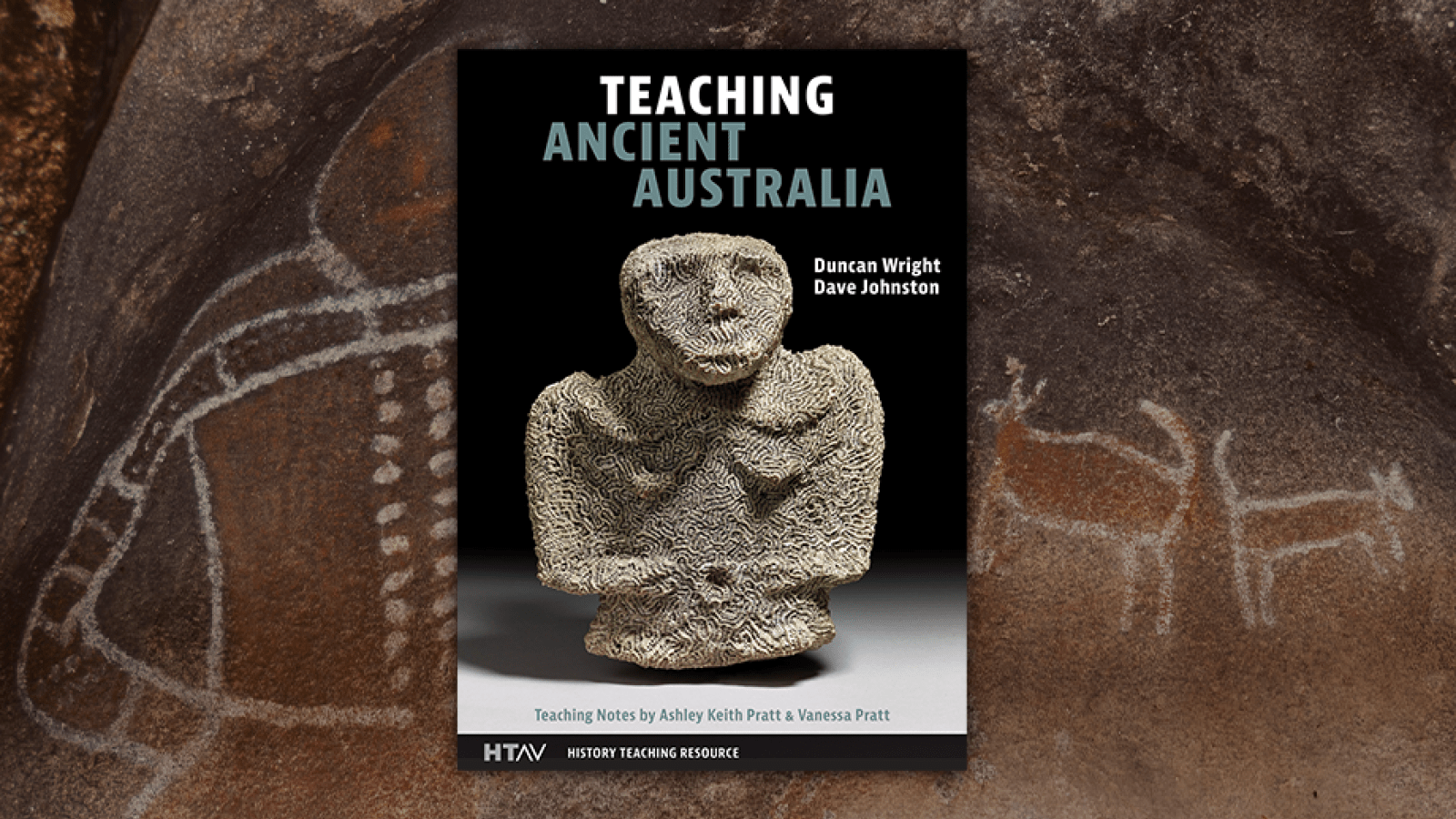Resource Launched to Help Teach Australia’s Indigenous Archaeological History

Teaching Ancient Australia textbook over photograph of Aboriginal Cave painting in the Bunjil Shelter, Black Range, Victoria by Rene Riegal.
Congratulations to Associate Professor Duncan Wright and academic Dave Johnston from the ANU School of Archaeology and Anthropology on the launch of Teaching Ancient Australia, a resource designed to help all teachers of Australia’s Indigenous archaeological history.
Launched at the annual History Teachers’ Association of Victoria (HTAV) conference, the textbook is a collaboration between non-Indigenous and First Nations authors. Associate Professor Wright said, “The textbook, aimed at Year 7 history teachers and their students, accompanies a major shift in the year 7 history curriculum. Australia (deep time to the modern era) is now part of the Victorian history curriculum for years 7 & 8 students, while 'Deep Time History of Australia' is now included within the National curriculum for year 7 students.”
“This amendment to the curriculum is a major step towards reconciliation, improving knowledge about First Nations history and culture amongst the next generation of Australians.”
The textbook, which is available in print and eBook, is comprised of three sections;
- Section A provides an introduction to Ancient Australia, beginning with the arrival of the First Australians on the supercontinent of Sahul. With perspectives from First Nations people, the section explores how the First Australians settled into this new continent and made it their own.
- Section B focuses on teaching Ancient Australian history, with links to the relevant sections of the Australian Curriculum and activities that promote the development of historical thinking skills. This section was written by Ashley Keith Pratt and Vanessa Pratt, both school History teachers in Victoria.
- Section C comprises six case studies of archaeological sites around Australia, suitable for classroom use. Each case study includes an informative lesson, a glossary, teaching notes and student worksheets, with some case studies including contributions from elders from these communities.
“I was eager to help fill this gap in knowledge for history teachers and I’m proud of the work Dave and I have done in contributing to this.” Associate Professor Wright noted.
“The rich archaeological history of First Nations peoples deserves to be taught and I hope to see similar changes made to curriculums across Australia.”
At the book’s launch, HTAV Publishing’s Kaye De Petro said to the assembled teachers, “I think, hope, that you will find Teaching Ancient Australia to be more than just a collection of words, images and maps but instead find it to be a journey into the Deep Time of Australia’s history and that of the First Australians. This book is a journey, a conversation and an encounter with the past for you and your students to experience and to learn from.”
Teaching Ancient Australia is a huge step forward for history teachers who have been looking for accessible, informative resources about Ancient Australia, developed with input from First Nations communities.
